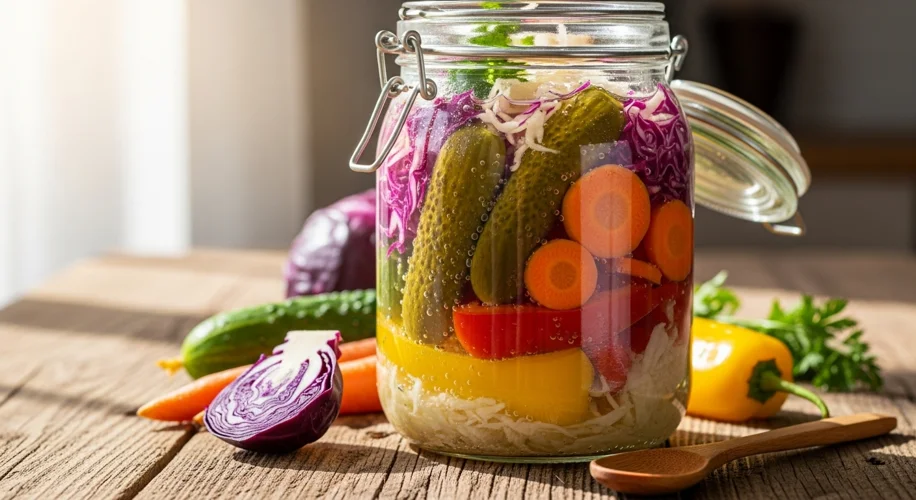Summer’s bounty is here, and if your garden is anything like mine, you’re probably swimming in fresh vegetables! It’s a fantastic problem to have, but what happens when the harvest outpaces our ability to eat it? That’s where ancient wisdom comes in. Today, I want to talk about fermenting vegetables – a time-tested method of preservation that’s not only practical but also adds incredible flavor and health benefits to your food.
Think about it: before refrigeration, how did people keep food through the lean months? One of the most effective ways was fermentation. This natural process uses beneficial bacteria, yeast, and enzymes to break down sugars in food, creating new flavors and preserving the food. It’s like a little science experiment happening right in your kitchen, and the results are delicious.
My journey into fermentation started a few years ago when I found myself with an overwhelming amount of zucchini. I love grilling and sautéing it, but there’s only so much one person can eat. I remembered reading about how people used to preserve all sorts of vegetables, and fermentation seemed like the most approachable method. I decided to try making sauerkraut, and honestly, it was a revelation. The crisp texture and tangy flavor were so much more complex than anything I’d bought from a store.
What’s so great about fermentation for us gardeners? It’s incredibly forgiving and doesn’t require fancy equipment. All you really need are fresh vegetables, salt, and a clean jar. The salt draws out moisture from the vegetables, creating a brine. This brine is the perfect environment for lactic acid bacteria, which are naturally present on the vegetables. These bacteria feast on the sugars, producing lactic acid. Lactic acid is what gives fermented foods their signature sour taste, and it also acts as a preservative, inhibiting the growth of spoilage microbes.
For example, let’s talk about making a simple fermented cucumber pickle (like a dill pickle, but naturally fermented). You’ll need fresh cucumbers, a brine made with filtered water and non-iodized salt (about 2 tablespoons of salt per quart of water), and some flavorings like garlic cloves, dill sprigs, and peppercorns. Pack your cucumbers tightly into a clean jar, add your flavorings, and pour the brine over them, making sure they are completely submerged. You might need a weight to keep them submerged. Then, cover the jar loosely (a lid with an airlock is ideal, but a regular lid left slightly ajar works too) and let it sit at room temperature for a few days to a week. You’ll see bubbles – that’s a good sign! – and the brine will get cloudy. Once it tastes good to you, you can put it in the refrigerator to slow down the fermentation process.
Beyond pickles and sauerkraut, you can ferment carrots, cabbage, radishes, beets, and even peppers. Each vegetable brings its unique flavor profile to the party. Fermented foods are also fantastic for your gut health because they are rich in probiotics, those friendly bacteria that support a healthy digestive system. It’s a win-win: preserve your harvest and boost your health.
So, the next time you’re staring at a surplus of garden goodies, don’t let them go to waste. Give fermentation a try. It’s a connection to our ancestors, a way to eat seasonally, and a delicious adventure for your taste buds. Happy fermenting!

